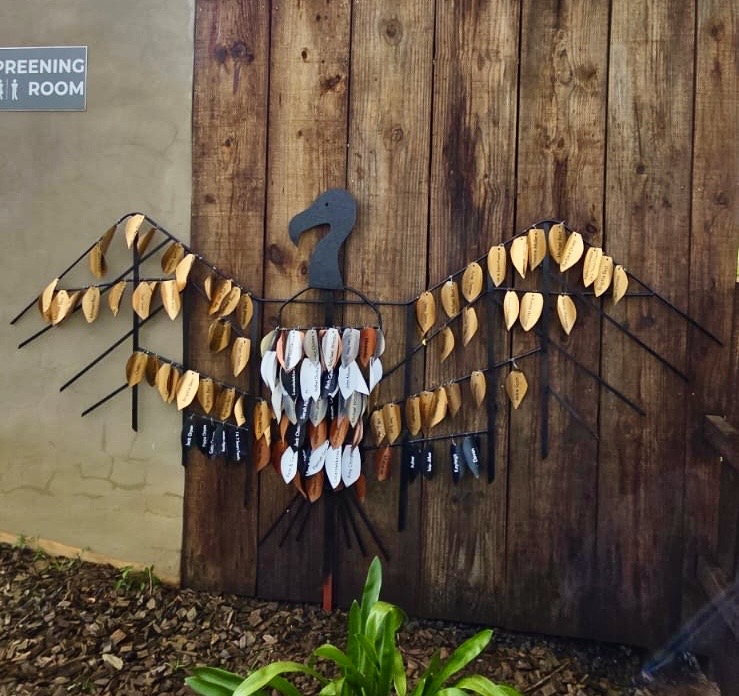In the province of KwaZulu-Natal (KZN), where Wildlife ACT works on a number of conservation efforts, Rhino poaching is one of the most depressing and demanding issues. Rhino reserves are faced with astronomical security costs, which are above and beyond what any of their expectations may have been when many of them embarked on reintroducing Rhino to their protected areas.

After pouring a huge amount of funds and collaborative efforts into region-wide anti-poaching efforts, there was still an unacceptable loss of rhino from reserves in KZN. An unattractive choice had to be made… lose more rhino to poachers, or remove the horns from the rhino ourselves by means of rhino dehorning. It is a sad reality that in order to help save rhino species from the threat of poaching, the preemptive removal of their horns in a safe, controlled manner, has become one of the necessary and highly-effective management tools for conservationists to deter poachers. Somkhanda Community Game Reserve, in northern Zululand, regularly dehorns all of their rhino, and has seen a significant decrease in incursions.

The Rhino Dehorning Process
The rhino dehorning process is carried out by an experienced veterinarian and is a painless experience for the animal under sedation. Every precaution is taken to ensure that rhino dehorning is as stress-free as possible. This begins with sedation by a dart administered from a helicopter, containing a powerful opioid drug. Once the dart is in the animal, the pilot guides the rhino to an open location - one that is easily accessible to the ground team and as close to a road as possible.
Once the animal is under sedation, the sedative is partially reversed. This is so that the animal can continue to breathe unassisted. As soon as the rhino is immobilised, the helicopter crew notifies the ground team, who move with great speed carrying water tanks and all the necessary equipment for a fast and safe rhino dehorning.

The immobilisation drugs have no lasting effects on the animals. Its eyes are covered with a large blindfold, its ears are plugged to drown out sound, and if necessary, its body is kept cool by the ground crew continuously spraying water on the animal. Measurements of the horn are taken and hair, blood and tissue samples are collected and microchips scanned. All data is meticulously recorded.
The veterinarian then proceeds to remove both horns with a chainsaw and an angle grinder for a smooth finish. While this is being done, a new tracking collar is fitted to one of the rhino’s ankles and the old one is removed. The ground team may need to support the rhino or readjust the rhino’s legs during the procedure. The horn which has been removed is marked and immediately moved to an undisclosed secure location, usually a bank vault. A ground sheet is placed beneath the rhino’s head to catch the shavings, which are later burnt.

The site where the horn was removed is sprayed with a blue/purple antiseptic for good measure. Once the operation is completed, the veterinarian administers the reversal antidote to wake the animal, and the ground crew moves off to a safe distance. The veterinarian positions himself strategically to observe the animal coming around and ensures that the individual makes a full recovery before leaving it. The whole rhino dehorning procedure, from when the dart goes in to administering the reversal drug, takes approximately 30 minutes.
The two rhino bulls in the video below got up and found each other soon after the interventions. The rangers then monitored them closely to ensure their well-being.
It is important to note that the rhino dehorning strategy requires that every individual in a population is dehorned so that all individuals have equal advantage in defending themselves from competitors. Rhino dehorning can never be the only solution. It is only one tool in the arsenal of weapons we have to try and combat rhino poaching. It is a last resort and is only implemented in certain conditions: where adequate security measures and an effective monitoring protocol are already in place, dehorning is the next available tool.
Rhino dehorning is a short-term solution, and the sad reality is that it only deflects the risk onto populations that have not been dehorned yet. It is recognised that authorities still need to work hard towards a long-term solution that removes the risk entirely, and this is where higher level support of governments and others is needed to find more strategic solutions to this global crisis of unsustainable natural resource use.
Broader engagements are needed to stamp out illegal trade, to enforce greater penalties within the judicial systems, and to reduce demand by end-users. Dehorning simply buys some time to work toward these objectives.
Wildlands, a programme of WILDTRUST, the Gumbi community & Wildlife ACT work closely together to ensure that Somkhanda’s endangered species are closely monitored and protected.
- Text & Video by Senior Wildlife ACT Monitor Pippa Orpen





.jpg)





